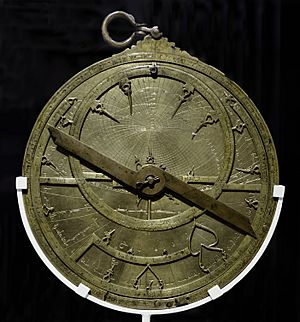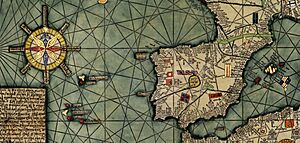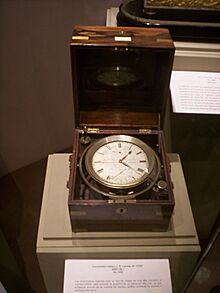History of science and technology in Spain facts for kids
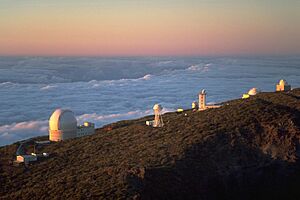
Science and technology in Spain has a long and interesting history, going back to prehistoric times. This article will explore how these fields have grown and changed in Spain over the centuries. We will also look at how science and technology are supported and developed in Spain today.
Contents
A Look Back: Science and Technology Through Time
The story of science and technology in Spain is part of the bigger story of human progress, especially in Europe. For a long time, Spain was not always at the forefront of big scientific changes, unlike some other countries. However, many important discoveries and inventions eventually reached Spain.
Early Discoveries: Prehistory in Spain
Even before writing existed, people in Spain were using science and technology. We can learn about their ideas by looking at ancient cave art, studying how they made stone tools, and examining old bones.
Early humans like Homo Heidelbergensis lived in places like Atapuerca near Burgos. Scientists study their bones to understand how they communicated. This helps us learn about early human thought.
Later, during the Neolithic Revolution, people started farming and making pottery. In Spain, people at Los Millares (near Almería) began working with copper around 3000 BC. They also improved farming with irrigation. This shows how early communities developed new ways of living.
Around 1000 BC, people in Spain started using iron. This new metal was brought by traders from the Mediterranean and by Celts from Central Europe. Other important inventions like the wheel, plough, and sail also arrived, changing how people lived and worked.
Roman Times: Building and Learning
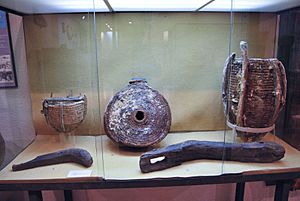
When the Roman Empire came to Spain (then called Hispania), it brought amazing building techniques. You can still see examples today, like the Alcántara bridge and the Aqueduct of Segovia. The Romans also built many roads and developed advanced mining methods, such as the large gold mines at las Médulas.
Some famous Greek scientists, like Polybius and Posidonius, visited Cádiz. They studied the tides, which are much clearer in the Atlantic Ocean than in the Mediterranean Sea.
Spanish-born Roman writers also contributed to science. Pomponius Mela from Algeciras wrote about geography. Columella from Cádiz wrote about farming. These works show how Romans valued thinking and writing, but often saw manual work as less important.
Medieval Period: A Time of Great Progress
The Middle Ages were a very important time for science in the Iberian Peninsula. Both Christian and Muslim rulers, along with Jewish scholars, made big advances. For example, San Isidoro wrote the Etymologiae, a huge encyclopedia of knowledge.
New technologies appeared as society changed. In agriculture, people developed better ways to farm and raise animals. The most impressive technologies were the water wheels and irrigation systems, which were greatly improved by the Arab-Hispanic civilization in southern Spain.
Spain's location between the Atlantic and Mediterranean Seas helped trade grow. This led to improvements in shipbuilding, map-making, and astronomical studies. In the Kingdom of Aragón, new trading halls and banking systems were created. In the Kingdom of Castile, trade fairs became important places for business.
Early Modern Era: New Worlds and Challenges
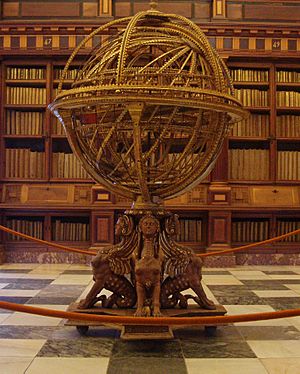
The conquest of the Americas brought both wealth and problems to Spain. The huge amounts of gold and silver led to inflation, which made it harder to invest in new businesses.
The Spanish monarchy, especially after the Catholic Monarchs united Spain, made decisions that affected science. The expulsion of the Jews in 1492 and the expulsion of the Moriscos in 1609, along with the Inquisition, limited new ideas and led to a fear of different ways of thinking.
Despite these challenges, the vast overseas empire needed advanced science and technology, especially for sea travel and mining. In 1598, King Philip III even offered a prize for a way to find longitude at sea. Even Galileo Galilei tried to win it! This problem was so hard that it wasn't solved until the 18th century, when accurate watches were invented in England.
Spanish universities, influenced by the Counter-Reformation, became less open to new ideas from outside Spain. This led to a period where Spain fell behind other European countries in scientific progress.
The Enlightenment: A Push for Progress
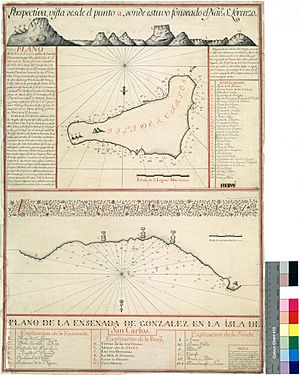
During the Age of Enlightenment, people in Spain realized that their country was falling behind in science and technology. They wanted to use "reason" to make progress, especially in applied science. There was a famous debate about what Spain had contributed to science, and many felt it was not enough compared to other European nations.
Before the Enlightenment, "science" wasn't clearly separate from "literature" or "humanities." But during this time, people started to see science as its own important field.
Spain's old ways of life and economy made it hard to keep up with the Industrial Revolution happening in England and the French Revolution in France. In other countries, science and technology began to work together, leading to faster innovation.
There was also a lot of resistance to new ideas in Spain. People who wanted to modernize were often accused of having dangerous religious or political views. For example, the Jesuits, who were often very educated, were expelled from Spain in 1767. This hurt scientific teaching and research.
The 19th Century: Wars and Slow Changes
The Peninsular War (also called the War for Spanish Independence) was a disaster for Spanish science. Many scientists left the country, and important factories were destroyed. Spain had contributed to discovering chemical elements like platinum and tungsten in the 18th century, but played little part in new discoveries in the 19th century.
Despite the challenges, some institutions were created, like the Prado Museum and the National Library. Universities also slowly began to improve.
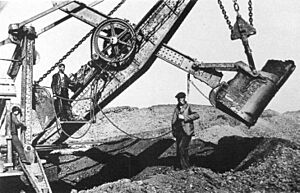
Spain's economy in the 19th century faced many problems, including civil wars. This slowed down the process of industrialisation. However, new policies encouraged building railways and mining, which brought foreign investment.
Many educated people in Spain felt that the country was still far behind. There was a big debate about why Spain seemed to lack scientific progress. Some argued that Spain's past, including the Inquisition, had held it back. Others defended Spain's scientific history.
The 20th Century: Ups and Downs
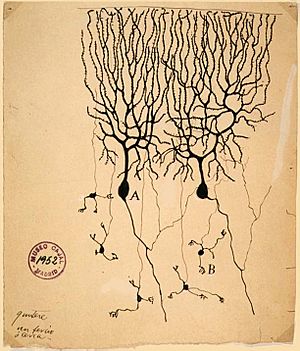
In 1906, the Spanish scientist Santiago Ramón y Cajal won the Nobel Prize for Medicine. This marked a "Silver Age" for Spanish science and arts in the early 20th century. Cajal himself spoke about the need for hard work and focus in scientific research.
The Spanish Civil War was another tragedy for science. Many scientists had to leave Spain, including Severo Ochoa, who later won the Nobel Prize for Medicine in 1959 as an American citizen. Scientific life in Spain suffered greatly during the long period after the war.
During the Franco regime, science was often controlled by the government. The Spanish National Research Council (CSIC) was created in 1939. Its first president said they aimed for a "Catholic science."
However, some scientific and technological achievements did happen, such as the Talgo train and the building of the first nuclear power station in 1968. After Spain became a democracy and joined the European Union, scientific and technical progress sped up. In recent years, Spain has been ranked among the top countries for innovation.
How Science and Technology are Supported Today
Today, Spain has a system to support science and technology. The Ministry of Science and Innovation and the Ministry of Universities are in charge of this.
Spain has a State Plan for Scientific and Technical Investigation and for Innovation. There are also many public research bodies, led by the Spanish National Research Council (CSIC). These include large science facilities and science and technology parks.
One challenge for Spain has been that private companies don't invest as much in research and development (R&D) as public institutions do. However, after the economic crisis of 2008-2013, many Spanish companies started to compete more globally. This has led to more private investment in science and technology.
See also
 In Spanish: Historia de la ciencia y la tecnología en España para niños
In Spanish: Historia de la ciencia y la tecnología en España para niños
- Open access in Spain
- Women in STEM fields


